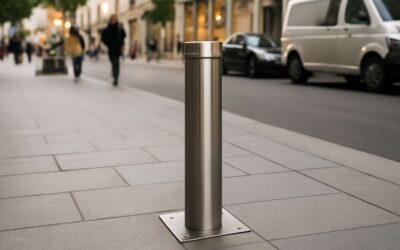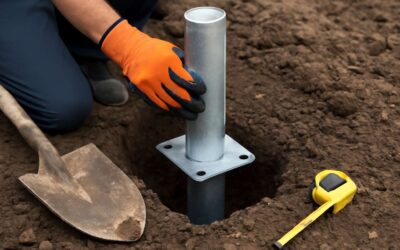
Concrete bollards are an effective traffic control solution that delineates the perimeter of parking and transportation areas. They also act as visual markers for drivers and pedestrians to direct them around the area.
There are several different types of bollards available, each serving a particular purpose. Choosing the right type for your project depends on the location, function and design of the space where the bollard will be used.
Embedded Bollards
Embedded bollards are often used to delineate sensitive areas that require high levels of security. They are usually made from steel or concrete and buried deep within the ground for added strength. They are also useful for securing areas with high levels of permeability, such as tunnels or underpasses.
Aesthetic Bollards
Decorative bollards are often installed in places where their presence is intended to be pleasant or unique, such as in parks or on buildings. These can be a great way to protect the landscape or wildlife and deter vandalism.
Construction Bollards
Construction bollards are a common sight during road construction projects and can be used to protect workers from impacts and redirect traffic. They are also an ideal solution for preventing vehicles from driving past construction sites, as well as providing a visible edge to drivers while reversing their vehicle.
Marine Bollards
Another popular use for marine bollards is to anchor a boat. They are designed in mushroom shapes and often include a cross rod to keep ropes from coming loose.
Bicycle Parking Bollards
Similar to marine bollards, bicycle parking bollards are a crucial part of bicycle lock-up systems. They are designed in a post-and-arm shape that allows two bikes to be secured on the same bollard.
Cement-filled Bollards
In order to install a bollard, it is typically necessary to dig a hole, drop in the bollard, and then fill it with cement. While this is a simple and inexpensive way to secure a piece of property, it doesn’t offer the same level of protection that an embedded bollard offers.
You’ve probably seen a chain link fence post that has been filled with cement in one of those TV shows where a car runs through it and gets towed away. That’s not how a bollard should be installed.
While concrete bollards are not crash-rated, they are still an effective form of impact protection. Unlike a chain link fence post, a bollard absorbs impact energy gradually over time, thereby reducing the damage to vehicles, passengers and loads.
They can be easily installed without affecting the existing infrastructure. Nevertheless, you’ll want to make sure that the foundation of the concrete bollard is strong enough to withstand the impact of a vehicle.
Depending on the application, you can choose from a wide range of concrete bollards that are made from different materials. For example, some are made from rebar or welded steel.
Other bollards are made from concrete and are sandblasted or textured for an attractive finish. Some are designed for maximum visibility, including 360-degree lighted bollards that provide a high level of visibility to drivers and pedestrians while also directing them towards their destination.


0 Comments